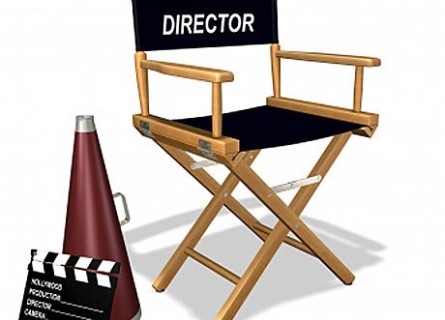Whenever someone wants to make a movie, a commercial, or even an internet video, a Director is part of the production crew – but not the most important part. The most important person on the team is the Producer.
It’s the Producer who has to put all of the many pieces of the “production puzzle” together. The first four essential pieces or elements that all movies or videos need to have are: A Hook; A High Concept Title; A Recognizable Genre and of course Creativity.
The Hook is the promotable element of the project and it must be easily identifiable. Something that the intended audience will instantly like and want to see. The Hook is the grabber visual, the big scene that makes the movie irresistible.
Next, it’s the Producer who comes up with the working Title for the movie. This may change, but it’s the Title that the audience will see first in advertisements and trailers. The Title should be brief, but very descriptive and create an instant image of the movies Hook.
The third piece is the Genre of the movie. It seems like every summer or fall the “hot” movie Genres change and it’s the Producer who has to recognize this during the concept stage. What is hot this season may not be hot next season: Drama; Sci-Fi; Horror; Romance; Western or even a Romance /Sci-Fi combo.
Lastly the program itself needs Substance, Production Creativity – This means a great Script. The Producer must now find just the right — Writer. The concept may be great in the Producer’s mind but it needs to be put onto paper, in script format. It will approximate the blueprint for the program, with not only dialogue, but also a rough idea of camera angles, lighting and set design with locations.
But I am jumping ahead of myself. Before the Script there needs to be a Treatment. This puzzle piece, written by the Writer or sometimes the Producer, is a short synopsis of what the movie or program is all about. A two page picture of the two hour movie –short and sweet. With this Treatment in hand the Producer can show it around to help get financing; to help get distribution and to get a Production crew interested in working on the project.
Next the Producer must develop the Production Budget. The Budget will quantify the number of pre-production days; the number of shoot days; the number of post-production days; the number of finishing days and the equipment and personnel needed for them. And these are all quoted in terms of: a flat fee; an hourly rate; or a day rate.
These positions will get Flat Rate Fees:
Production Personnel: Executive Producer; Producer; Director and Production Manager.
The Writer: Treatment – Script – and Rewrites.
The Talent: The on-camera Talent. ( Non-Union )
These positions will get Day Rates:
The Production Crew: Cameramen; Lighting Director; Grip; Electrician; Make-Up; Wardrobe; and Assorted Assistants.
The Video Equipment Rental: Cameras; Sound; Lights; and Grip equipment.
The Camera’s Video Storage: Cards and Drives.
For the Music and Narration: Talent; Recording Studio will have a buy-out Fee.
And finally for Video Editing: Transfers; Offline; Online; Graphics and Effects, will
all be based on Hourly Rates.
The next piece of the puzzle is the really “hard” decision – where to rent production office space. Lots of choices if you want to be a part of the “Entertainment Community”. Here are a few choices: Hollywood of course is one; Burbank near Disney; Culver City near Sony Pictures; or maybe the new hot spot Marina Del Rey. Decisions – Decisions, and furnished of course, but not too fancy. This line item will be a Monthly Rate in the Budget.
And last but not least to protect the Financial backers; the Cast and Crew and of course the Producer, there are the Insurance costs: Production Liability; Errors and Omissions and a Completion Bond. Into the budget they all go as Flat Fees. Oh yes, and being a good but a cautious Producer he will add 15% to the bottom line for contingencies, the “Unforeseen Problems”.
OK, now all of the Production Puzzle pieces are in place and it’s up to the Producer to make it all “Work”. And I haven’t forgotten about all of you out there who want to be Directors. After the Producer hires all of the Cast and Crew, booked the studio, camera, lighting and grip equipment; and set a date for the pre-production meeting, then he will give you a call to join in.
For my next article I will discuss in-studio, remote, live news feeds over fiber.

